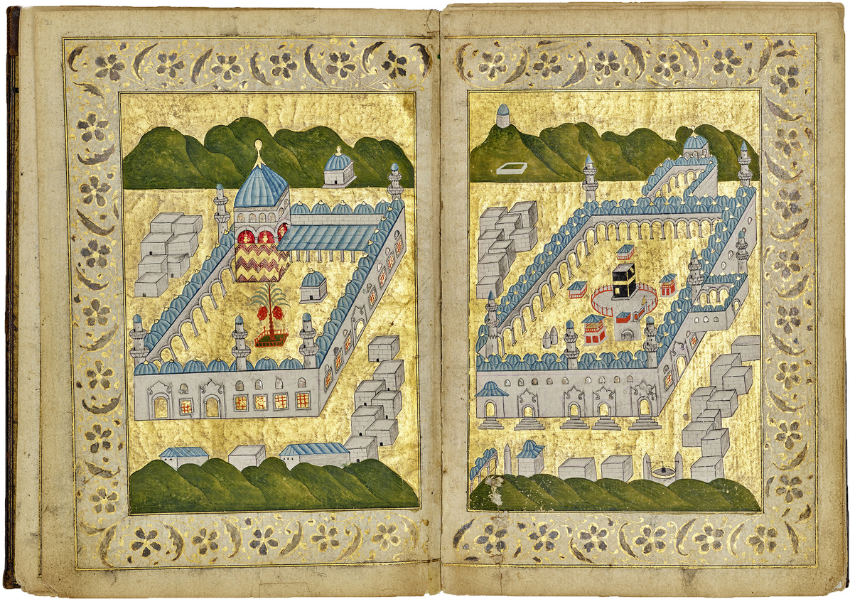Crossroads & Connections: Mecca of the Mind
By The National Library of Israel
Published Apr 26, 2023

Muhammad al-Jazuli, Signs of Benevolent Deeds, Ottoman Empire, 1734

>>> Expand this image. <<<
One of the most popular manuscripts in the pre-modern Muslim world, Signs of Benevolent Deeds (Dala’il al-khayrat), is a collection of prayers and meditations on the Prophet Muhammad. It was written by Muhammad al-Jazuli (1404–1465), a revered mystic of medieval Morocco, who developed a Muslim Sufi order centered on intensive spiritual love and devotion to the Prophet Muhammad. Thousands of handwritten copies of this prayer book were copied in North Africa, the Ottoman Empire, and Central and South Asia.
The immense popularity of this book is often ascribed to the two iconic illustrations of the holy cities of Mecca and Medina found in most copies. And, in this case, sacred art has a political backdrop. Following their sixteenth-century conquest of the Arabian Peninsula, the Ottoman sultans cultivated their reputation as guardians of the hajj pilgrimage sites by disseminating visual imagery of them throughout their empire. The illustrations of Mecca and Medina were a powerful representation of the first pillar of Islam: the Ka‘ba at Mecca (right) as the symbol of God on earth, and the mosque in Medina (left) as the symbol of the beloved Prophet Muhammad. The images highlight the cross-fertilization of North African Sufi prayers with Ottoman iconography.
Muhammad al-Jazuli, Signs of Benevolent Deeds, folios 19v–20r. Ottoman copy from 1734. The Abraham Shalom Yahuda Collection. Ms. Yah. Ar. 864.
Photography by Ardon Bar-Hama.
Founded in Jerusalem in 1892, the National Library of Israel (NLI) serves as Israel's preeminent research library
Reflections
Click here to visit the exhibition resource page to learn more and to browse accompanying lesson plans, webinars, and videos, about the treasures in this exhibition.
Want more?
Get curated JewishArts.org content in your inbox


